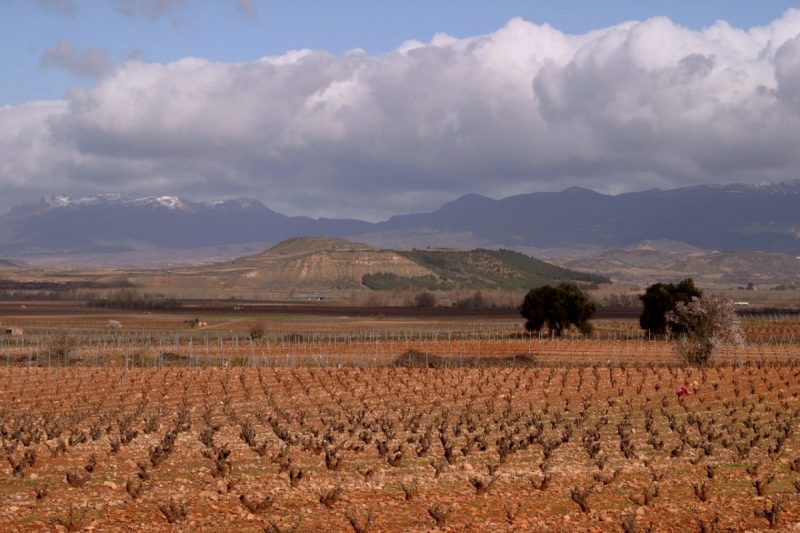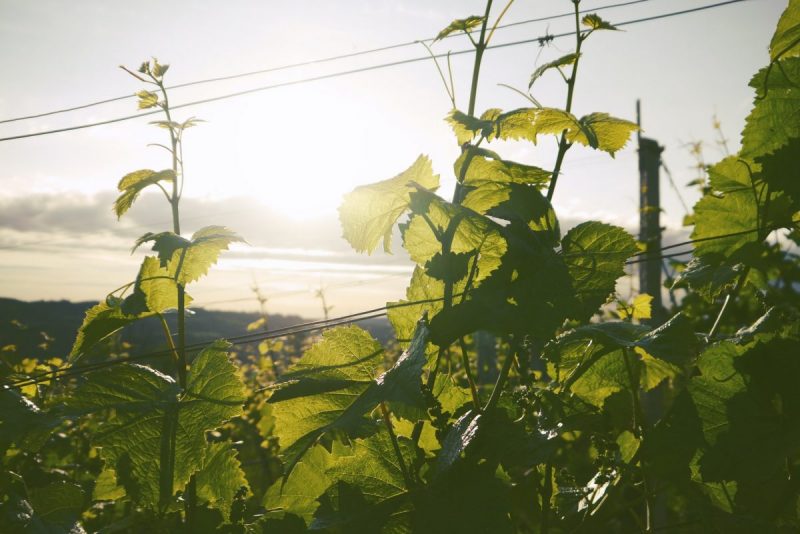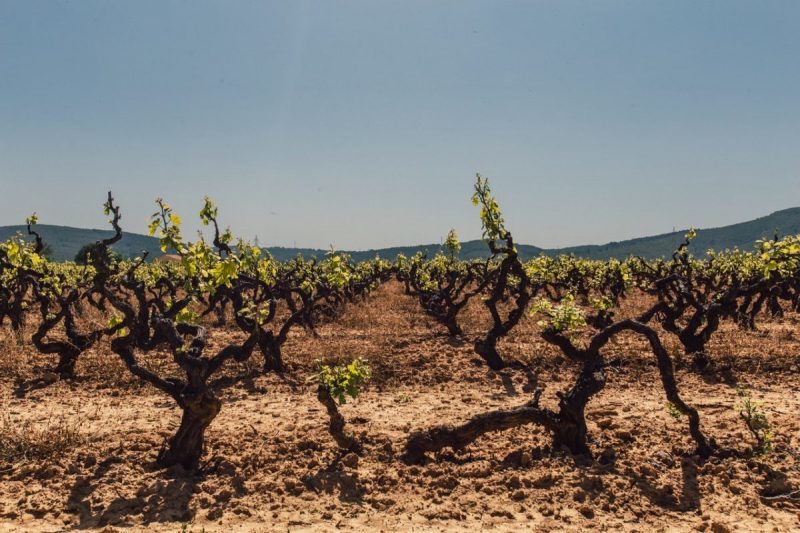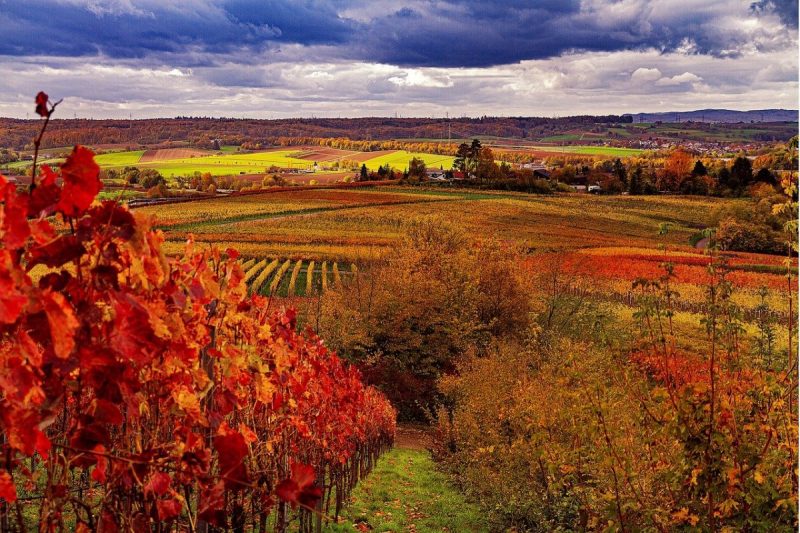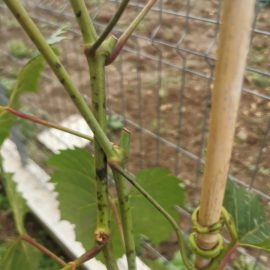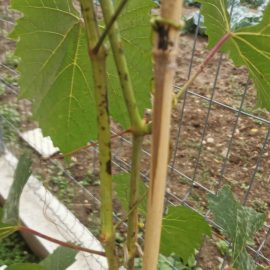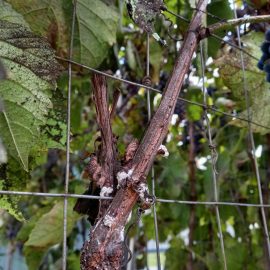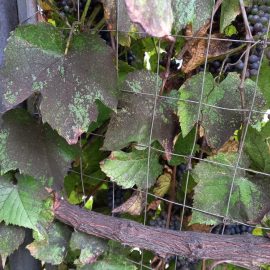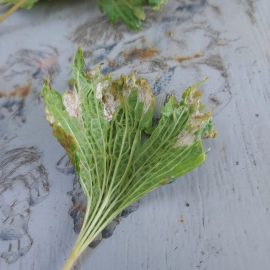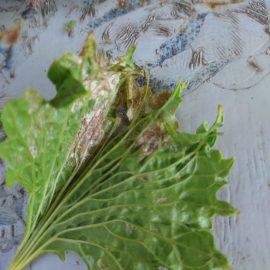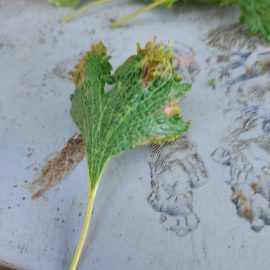Works in the second year (II) after planting the grapevine
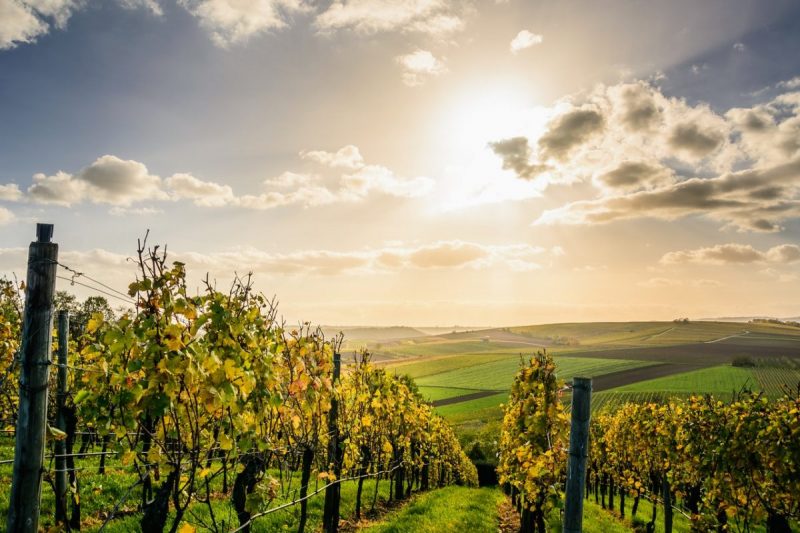
The works that are applied in the first years after planting (3-4 years) have an essential impact on the future plantation, influencing its uniformity, the vigor of the stumps, as well as the quality and quantity of the production. Thus, the works from the second year after planting are of great importance. These are similar to those applied in the first year, but, in addition, the removal of the mounds, dry trimming, as well as the mounting of supports will be added.
Mound removal and spring plowing. There are works that are applied in early spring, when there is no danger that the air temperature will drop to -8…..- 10ºC. Mound removal is done manually, with a hoe. This work consists in removing the soil from the vines, up to the point of grafting, without affecting them in any way.
Plowing is carried out at a depth of 14-16 cm, and the furrows will be overturned towards the space between the rows. In the case of dry springs, in order not to lose water by evaporation, the soil should be loosened at the respective depth.
Dry trimming and cutting the roots. In the second year after planting, the shape correction cuttings are carried out, in accordance with the vine steering and the intended type of cut. These are done after the mound removal and must be completed until the buds enter the vegetative growth period . The cutting of the roots can be carried out at the same time with the dry trimming and is repeated in August.
Forming low-steered stumps:
- Two spurs with 2-3 meshes each need to be kept after cutting;
- A single spur is kept when the growth of the vines is weak or just a single vine is formed.
Forming stumps with semi-high, high steering or various other shapes:
- Leave a cane of 5-6 meshes, tie it in an upright position, while the rest of the growths are removed;
- In the case of low-growing vines, a 2-3-mesh spur is left after cutting.
Recommended products
-
You can find products on a different store
Change Store -
You can find products on a different store
Change Store -
You can find products on a different store
Change Store -
You can find products on a different store
Change Store -
You can find products on a different store
Change Store -
You can find products on a different store
Change Store -
You can find products on a different store
Change Store -
You can find products on a different store
Change Store -
You can find products on a different store
Change Store -
You can find products on a different store
Change Store -
You can find products on a different store
Change Store -
You can find products on a different store
Change Store -
You can find products on a different store
Change Store -
You can find products on a different store
Change Store -
You can find products on a different store
Change Store -
You can find products on a different store
Change Store -
You can find products on a different store
Change Store -
You can find products on a different store
Change Store -
You can find products on a different store
Change Store -
You can find products on a different store
Change Store -
You can find products on a different store
Change Store -
You can find products on a different store
Change Store -
You can find products on a different store
Change Store -
You can find products on a different store
Change Store
Weeding and shoot binding. When the shoots have reached 8-10 cm in length, remove the one in excess and keep only the suitable ones, depending on the growth. Thus, in the case of vines with vigorous growth, 3-4 shoots will be kept, while in the case of those with a weak growth, 2-3 are kept, to stimulate the growth. As they grow, they will be tied to the tutor and then steered through the rows of wires from the support. It is carried out approximately 2-3 times, or whenever it is needed, for each additional growth, of 40-50 cm. Along with the binding, the thinning out is carried out, in order to stimulate the shoots’ growth in length.
Filling in the gaps. The gaps in the plantation, which occur in the second year after planting, are completed with grafted, vigorous vines, which are protected either by paraffining or by mound layering. In order to obtain uniform stumps in terms of vigor, specific works will be carried out to the planted grapevine (watering, root pruning, etc.). If gaps appear during the vegetative growth period, they will be filled in August, with fortified vines in flower pots, or in autumn, after the leaves have fallen, with vigorous vines.
Fertilization. In the case of low-growing vines, it will be done with specific products, according to the chosen product.
Recommended products
-
You can find products on a different store
Change Store -
You can find products on a different store
Change Store -
You can find products on a different store
Change Store -
You can find products on a different store
Change Store -
You can find products on a different store
Change Store -
You can find products on a different store
Change Store -
You can find products on a different store
Change Store -
You can find products on a different store
Change Store -
You can find products on a different store
Change Store -
You can find products on a different store
Change Store -
You can find products on a different store
Change Store -
You can find products on a different store
Change Store -
You can find products on a different store
Change Store -
You can find products on a different store
Change Store -
You can find products on a different store
Change Store -
You can find products on a different store
Change Store -
You can find products on a different store
Change Store -
You can find products on a different store
Change Store -
You can find products on a different store
Change Store -
You can find products on a different store
Change Store -
You can find products on a different store
Change Store -
You can find products on a different store
Change Store -
You can find products on a different store
Change Store -
You can find products on a different store
Change Store
At the same time, in the case of soils poor in humus, it is recommended to use green fertilizers, which were sown in autumn and incorporated during the following spring.
Recommended products
-
You can find products on a different store
Change Store -
You can find products on a different store
Change Store -
You can find products on a different store
Change Store -
You can find products on a different store
Change Store -
You can find products on a different store
Change Store -
You can find products on a different store
Change Store -
You can find products on a different store
Change Store -
You can find products on a different store
Change Store -
You can find products on a different store
Change Store -
You can find products on a different store
Change Store -
You can find products on a different store
Change Store -
You can find products on a different store
Change Store -
You can find products on a different store
Change Store -
You can find products on a different store
Change Store -
You can find products on a different store
Change Store -
You can find products on a different store
Change Store -
You can find products on a different store
Change Store -
You can find products on a different store
Change Store -
You can find products on a different store
Change Store -
You can find products on a different store
Change Store -
You can find products on a different store
Change Store -
You can find products on a different store
Change Store -
You can find products on a different store
Change Store -
You can find products on a different store
Change Store
Protecting grapevines in winter. It is protected by mound layering, carried out after the autumn plowing. If the vine is planted in areas frequently affected by severe frosts, it is advisable to protect 1-2 cordons, over the winter, by covering them partially or totally.
The soil works that are carried out in the second year, as well as the control of diseases and pests are the same as in the 1st year after planting, applying specific products.
Recommended products
-
You can find products on a different store
Change Store -
You can find products on a different store
Change Store -
You can find products on a different store
Change Store -
You can find products on a different store
Change Store -
You can find products on a different store
Change Store -
You can find products on a different store
Change Store -
You can find products on a different store
Change Store -
You can find products on a different store
Change Store -
You can find products on a different store
Change Store -
You can find products on a different store
Change Store -
You can find products on a different store
Change Store -
You can find products on a different store
Change Store -
You can find products on a different store
Change Store -
You can find products on a different store
Change Store -
You can find products on a different store
Change Store -
You can find products on a different store
Change Store -
You can find products on a different store
Change Store -
You can find products on a different store
Change Store -
You can find products on a different store
Change Store -
You can find products on a different store
Change Store -
You can find products on a different store
Change Store -
You can find products on a different store
Change Store -
You can find products on a different store
Change Store -
You can find products on a different store
Change Store
Recommended products
-
You can find products on a different store
Change Store -
You can find products on a different store
Change Store -
You can find products on a different store
Change Store -
You can find products on a different store
Change Store -
You can find products on a different store
Change Store -
You can find products on a different store
Change Store -
You can find products on a different store
Change Store -
You can find products on a different store
Change Store -
You can find products on a different store
Change Store -
You can find products on a different store
Change Store -
You can find products on a different store
Change Store -
You can find products on a different store
Change Store -
You can find products on a different store
Change Store -
You can find products on a different store
Change Store -
You can find products on a different store
Change Store -
You can find products on a different store
Change Store -
You can find products on a different store
Change Store -
You can find products on a different store
Change Store -
You can find products on a different store
Change Store -
You can find products on a different store
Change Store -
You can find products on a different store
Change Store -
You can find products on a different store
Change Store -
You can find products on a different store
Change Store -
You can find products on a different store
Change Store
Mounting the supports
Due to the particularities of the vine, respectively the fact that it is a liana and the mechanical tissues are poorly developed, it needs support, respectively the mounting of an adequate support system.
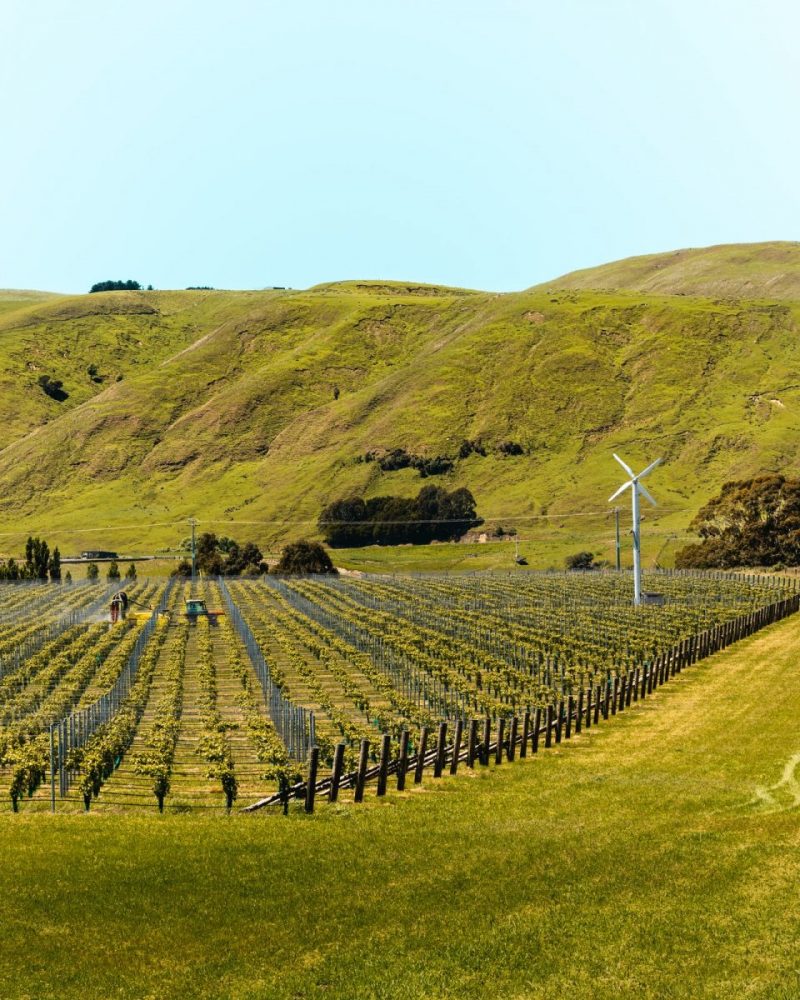
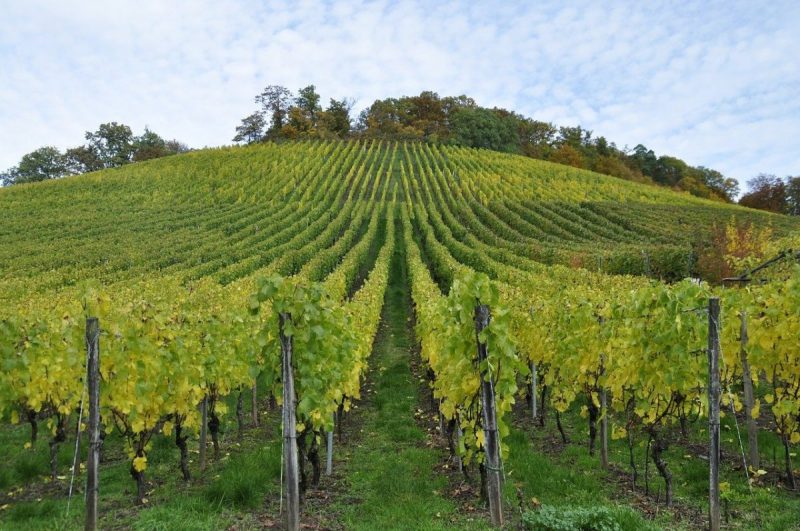

A support system must ensure:
- The support of the aerial part of the stump;
- The steering of the vegetative and woody elements of the stump;
- The possibility to achieve the steering form chosen;
- An optimal microclimate for a qualitative grape production;
In the viticultural regions with fertile soils and normal environmental conditions, suitable for vines, in which the shoots have a strong growth, the support of the vine is done on artificial supports: poles, trellises of different types, arches, etc. In regions where shoot growth is low, creeping and self-sustaining crops are also practiced.
The oldest means of support is represented by vine poles, but it is mainly used in family plantations. A means of support that has an increasing popularity is the trellis. Its mounting is necessary in the spring of the second year. Its use has a number of advantages, among which we want to mention:
- High durability (25-40 years);
- Uniform sun exposure of the foliage;
- It facilitates the care works to be carried out in the plantation;
- High wind stability;
- It increases the quality of the grapes.
Usually, it is recommended to use the trellis with double wires, on either side of the pillars, in order to facilitate the steering of the shoots during the vegetative growth period and of the fruiting cordons, when circling it.
The materials needed to mount the support system are poles, wires, wire collars, anchors and tensioners. The stages of mounting the trellis consist in: picketing, making holes, transporting and distributing the poles in the pits, fixing the anchors and collars on the poles, fixing and stretching the wires.














































































































































































































































































































































































































































